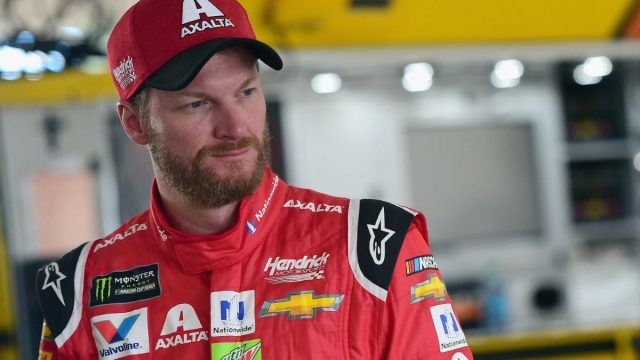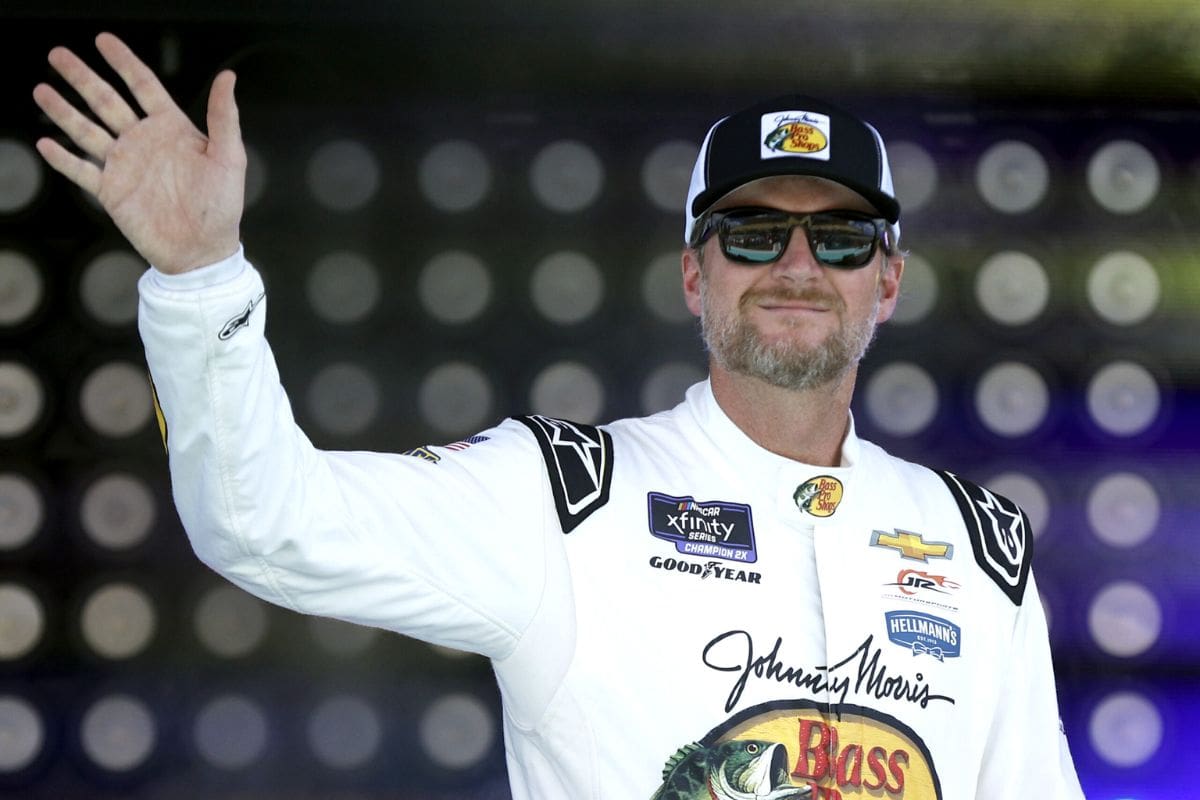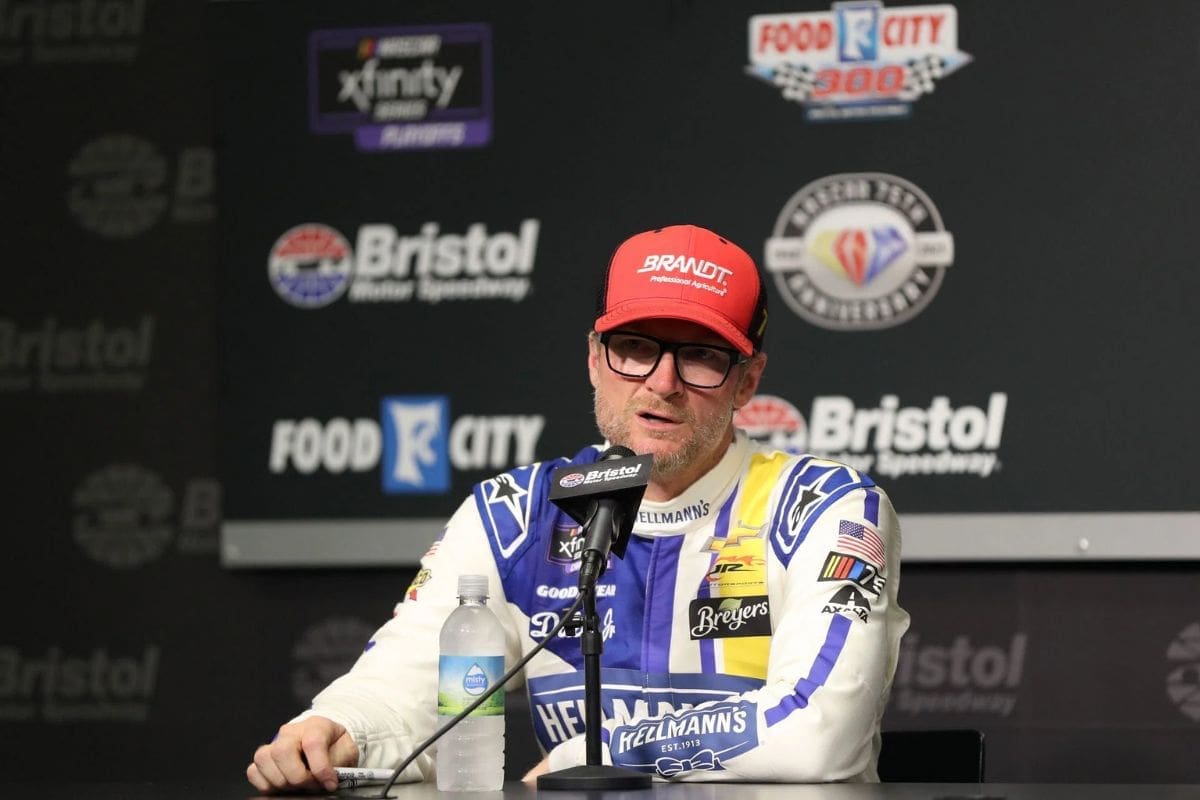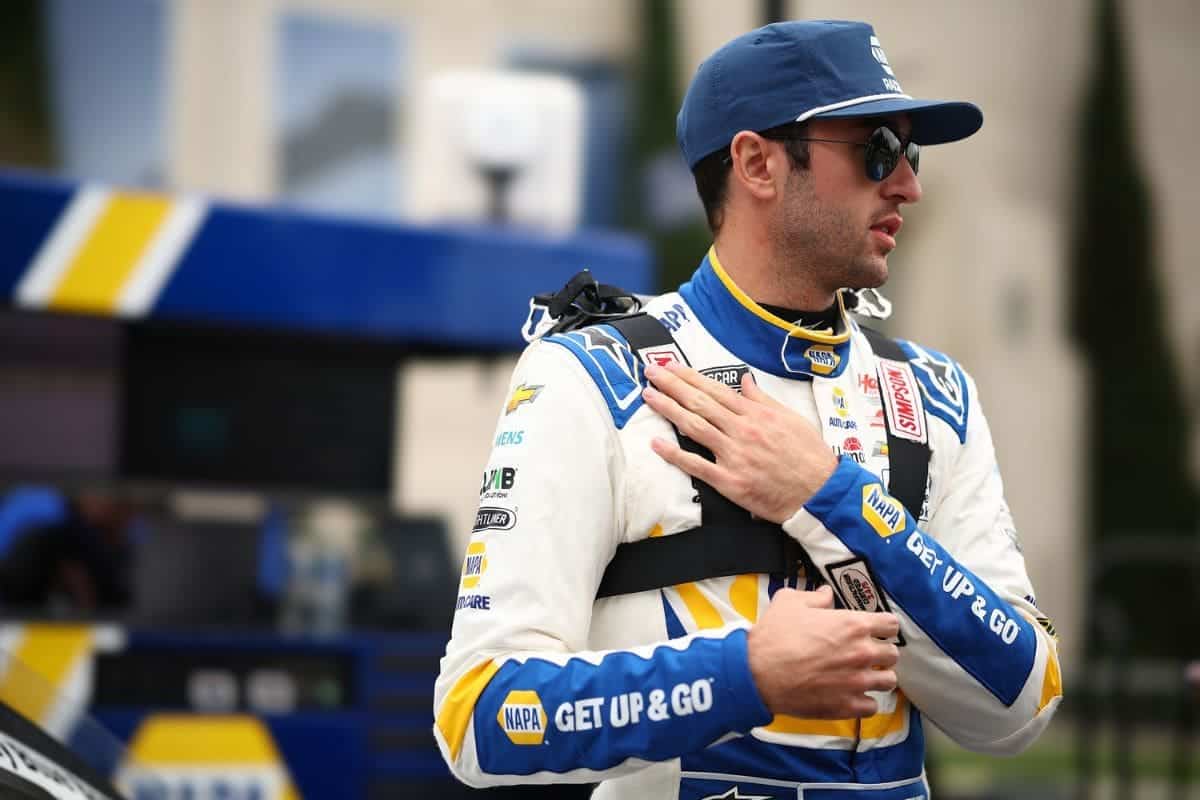Dale Jr Shares Unconventional Past: Dale Earnhardt Jr‘s honest reflection on his unconventional past, contrasted with the ‘smarter’ approaches of today’s NASCAR drivers, emphasizes a crucial shift in the sport’s focus on thorough fitness and recovery. Unlike Earnhardt Jr’s era, which lacked organized regimes, contemporary drivers are adopting precise training and nutrition plans designed to improve reflexes, endurance, and mental sharpness. This evolution highlights the increasing physical and mental demands of NASCAR and raises interesting questions about the future of driver training and performance optimization. How has this transformation shaped the careers of today’s top drivers?
Key Highlights
- Dale Earnhardt Jr. relied on immediate hydration and nutritional replenishment post-race without a structured fitness plan.
- His recovery included gentle physical activity, stretching, and mental relaxation rather than rigorous training routines.
- Despite a less traditional approach, Earnhardt Jr. excelled in NASCAR through self-awareness and personal recovery methods.
- Modern drivers follow advanced training techniques, integrating nutrition plans and recovery protocols for optimized performance.
- Today’s NASCAR demands a meticulous fitness regimen, emphasizing cardiovascular training, strength conditioning, and flexibility exercises.
Introduction to NASCAR Racing Demands
NASCAR racing demands an exceptional level of physical and mental stamina, requiring drivers to adhere to strict training and recovery schedules to maintain peak performance. Unlike the common perception that driving a car is a leisurely activity, NASCAR requires its athletes to possess extraordinary endurance, strength, and focus. The intensity of the sport, coupled with the high-speed environment and the need for split-second decision-making, places significant stress on drivers’ bodies and minds.
The modern era of balanced racing has heightened these requirements, compelling drivers to go above and beyond in their off-track preparations. To compete at the highest level, drivers must engage in thorough fitness regimes that include cardiovascular workouts, strength training, and flexibility exercises. These routines are tailored to improve their reflexes, boost endurance, and ensure they can withstand the demanding conditions of race day.
Mental preparation is equally crucial. Drivers must cultivate sharp cognitive skills, including quick decision-making and strategic thinking, to navigate the intricacies of the race. This involves studying track layouts, analyzing past performances, and engaging in mental exercises to enhance concentration and stress management.
What sets top drivers apart is their dedication to recovery. Instead of engaging in post-race celebrations, they prioritize restorative practices such as ample sleep, nutrition, and physical therapy. This disciplined approach to recovery guarantees they are prepared to perform at their best in subsequent races.
Dale Earnhardt Jr’s Approach to Recovery
Dale Earnhardt Jr.’s approach to recovery contrasts with the rigorous routines of today’s drivers, highlighting an era where staying hydrated after a wild weekend sufficed as preparation for the next race. In the earlier days of his career, Earnhardt Jr. embraced a more laid-back lifestyle that diverged greatly from the carefully planned recovery regimens seen in modern NASCAR.
In an environment where physical conditioning and mental fortitude are crucial, Earnhardt Jr.’s method might appear unconventional, yet it reflects the cultural norms of the time. His main focus was on rehydrating his body after the weekend’s festivities, a stark comparison to the structured diets, fitness programs, and mental conditioning adopted by current drivers.
While today’s athletes employ advanced techniques to optimize their performance, Earnhardt Jr.’s routine was rooted in simplicity and a profound understanding of his own needs. This approach, while unorthodox by today’s standards, highlights his adaptability and resilience as a driver.
- Hydration Focus: Prioritized rehydrating his body after extensive social activities over the weekend.
- Simplistic Regimen: Lacked the structured fitness and dietary plans that are now standard.
- Self-awareness: Demonstrated a profound understanding of his personal recovery needs.
- Era-specific Norms: Reflective of the broader culture within NASCAR during his early career.
- Adaptability: Managed to excel despite relying on a less traditional recovery method.
Dale Earnhardt Jr’s Post-Race Routine
Following each race, Earnhardt Jr. adhered to a simple yet effective post-race regimen that emphasized immediate recovery and mental relaxation. Given the physical and mental demands of NASCAR racing, especially at demanding venues like the Nashville Superspeedway, Earnhardt Jr. recognized the importance of a structured approach to recuperation.
His regimen began with immediate hydration and nutritional replenishment. The intense heat and physical exertion experienced during races required the swift replacement of lost fluids and electrolytes. Earnhardt Jr. often relied on a combination of water, sports drinks, and nutrient-packed snacks to restore his energy levels. This initial step was essential for preventing dehydration and ensuring his body could kickstart the recovery process effectively.
“Well, everybody’s different. I went home and drank a lot of beer. And I spend Monday, Tuesday, Wednesday, and Thursday hydrating. I wasn’t going to go home and try to drink a bunch of water and Gatorade and try to get it all back in one day.” – jr
Afterwards, Earnhardt Jr. prioritized cooling down through gentle physical activity and stretching. This helped to relieve muscle stiffness and lower the risk of cramps, facilitating a smoother shift from the high-intensity environment of the race track to a more relaxed state. Stretching also played a crucial role in maintaining his overall flexibility and physical readiness for upcoming races.
Mental relaxation was another integral part of Earnhardt Jr.’s post-race regimen. He often engaged in quiet reflection or light conversation with his team to process the events of the race. This practice not only allowed him to unwind but also provided valuable insights and lessons that could be utilized in future races.
Earnhardt Jr.’s post-race regimen was a reflection of his comprehension of the dual significance of physical recovery and mental clarity. By carefully attending to both aspects, he made sure that he remained at peak performance, prepared to tackle the challenges of the next race.
Modern-Day Challenges for NASCAR Drivers
The evolution of NASCAR has introduced a myriad of modern-day challenges that drivers must navigate to stay competitive. Unlike the more relaxed post-race routines of yesteryears, contemporary drivers face an array of obstacles that demand advanced strategies and heightened discipline.
Today’s NASCAR landscape is characterized by sophisticated technological advancements and an ever-increasing level of competition. Drivers must not only excel on the track but also manage numerous off-track responsibilities. The integration of data analytics, for instance, has become a pivotal component of race strategy, requiring drivers to be well-versed in interpreting complex data sets. Additionally, the physical and mental demands of the sport have intensified, necessitating rigorous fitness regimens and mental conditioning.
“Today, drivers are different. You can’t go home and drink beer after a hot race like that. You gotta take better care of your body, and there’s not enough places to find advantages anymore, and I think the drivers have to be a little more smarter these days than maybe I was or a lot of us were back in the 2000s and so forth.” – jr
- Technological Mastery: Understanding and utilizing advanced telemetry and data analytics to refine driving techniques and optimize vehicle performance.
- Physical Fitness: Maintaining peak physical condition to endure the grueling conditions of long races and to react swiftly to high-speed situations.
- Mental Toughness: Developing mental resilience to handle the immense stress and strategic complexity of modern racing.
- Media Engagement: Managing public and media relations effectively to build and maintain a positive public image, which can influence sponsorship and fan support.
- Regulatory Compliance: Staying updated with and adhering to NASCAR’s evolving rules and regulations, which govern everything from vehicle specifications to race conduct.
Chase Elliott’s Insights on Modern Fitness Regimen
Chase Elliott highlights the significant importance of maintaining a rigorous fitness regimen in the demanding world of modern NASCAR racing. Unlike earlier eras, today’s drivers cannot afford to relax with a beer after a grueling race weekend. The physical and mental demands of the sport have escalated, necessitating a thorough approach to fitness and recovery. Elliott emphasizes that contemporary drivers must prioritize their physical well-being to optimize performance on the track.
“If you’re coming off a really hot race, you want to spend your week trying to catch up before the next one. You need at least three or four days after a hot one. If I get dehydrated, it’s my calves that cramp up fast.” – Elliott
In the competitive landscape of modern NASCAR, every marginal gain counts. Elliott emphasizes that there are fewer opportunities to find advantages, making it essential for drivers to be meticulous about their health. This shift in focus represents a stark contrast from previous generations, where the emphasis on fitness was less emphasized. According to Elliott, today’s drivers are required to adopt a smarter approach, integrating advanced training techniques, nutrition plans, and recovery protocols into their daily routines.
“It’s not about benching or squatting the most, so if you lift, it’s about endurance. A low-weight, high rep regimen. You work your upper body pretty hard during a race, especially from your shoulders to neck. I never really know how to describe it, but there are certain muscles that we use that you just don’t use if you’re doing anything else.” – Elliott
Elliott’s insights reveal an evolution in the sport, where the physical condition of the driver is as vital as the performance of the car. He advocates for a disciplined regimen that includes cardiovascular training, strength conditioning, and flexibility exercises. This holistic approach not only improves endurance and reflexes but also aids in mental clarity and focus, critical elements for success in high-stakes racing.
News in Brief: Dale Jr Shares Unconventional Past
The development of NASCAR highlights the shift from Dale Earnhardt Jr’s informal methods to a more strategic and thorough approach among present-day drivers.
Emphasizing advanced fitness routines, precise dietary plans, and sophisticated recovery procedures, modern NASCAR athletes show an enhanced focus on overall well-being.
This change deals with the increased physical and mental requirements of the sport show the increasing significance of a carefully balanced lifestyle for continuous success in high-performance racing.
ALSO READ: Dale Earnhardt Jr Holds on to Cup Dream Despite Setbacks



